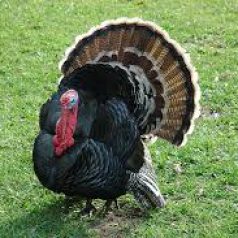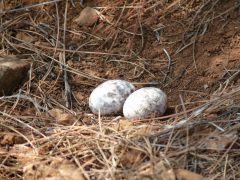When we enter the local markets, the first thing that catches our eye are the types of local bird eggs such as eggs, goose eggs, duck eggs, turkey eggs and quail eggs, which are stacked on top of each other with special skill and even watching them stimulates everyone’s appetite.
Amazingly, the size of these colorful eggs starts from a quail egg and ends with an ostrich egg, each of which feeds a large family and each number is equivalent to 20 eggs; But the main question is, which bird’s eggs have more nutritional value than eggs?

Eggs strengthen the immune system
An average egg contains 70 calories and has the best amount of protein and antioxidants compared to other birds’ eggs, and its protein is somewhat equal to dairy, meat and legumes, and can replace 30 grams of meat or two-thirds a glass of milk. .
Chicken egg yolk is rich in fat, cholesterol, iron, calcium, phosphorus, zinc, iodine, folic acid and vitamins A, D, E, K and B12, and its yolk nutritional value is higher than white, but protein , Sodium, potassium and magnesium are more white than yolk.
White prevents the growth of harmful bacteria in the gastrointestinal tract, and the yolk has anti-cancer properties due to its antioxidant properties, and due to some immunoglobulins, it strengthens the immune system, which is a significant advantage of eggs and quail eggs compared to other eggs. Birds.
Eggs are high in cholesterol, but their lecithin prevents the body from absorbing large amounts of cholesterol. It is important to know that if your cholesterol intake from different foods decreases, your body will synthesize cholesterol and it may even be higher than before.
Eggs are not contraindicated for people with gout due to their low uric acid content, and consuming three eggs a week reduces the risk of cataracts.

Goose eggs, high cholesterol
The goose is a beautiful domesticated but noisy bird. The silence breaks the village and most of the villagers raise them along with their cattle and sheep and include its meat and eggs in their diet to be nutritious.
Most people avoid goose and duck eggs because of their bad smell, but they should know that it is richer than eggs. It is larger than an egg and a duck, and each is equivalent to two eggs.
A goose egg has about 266 calories, of which 172 calories are related to the fat in its yolk, and a large egg weighs 144 grams and takes longer to boil than an egg.
Goose eggs are a good source of protein and vitamins B12, B6, EA, calcium, magnesium, potassium, iron, zinc, phosphorus and manganese and have higher amounts of carbohydrates, fats and calories than eggs and have much higher cholesterol. So that each number has about 1200 mg of cholesterol and therefore its consumption should be limited.
It is important to know that this bird’s egg is beneficial for increasing sexual desire due to its richness in energy and nutrients.

Duck eggs, less characteristic
There are two types of ducks, domestic and wild, which can be seen in some parts of the country. Wild duck and duck eggs are no different in nutritional value and are slightly larger than eggs despite their different sizes. The egg yolk of this bird is thick and slow to digest and its nutritional value is less than eggs.
Its white is clearer than eggs and has a bad smell and is not to the liking of some people. Although it has a higher cholesterol and fat content than eggs, it is recommended that if you travel to cities where there are ducks, be sure to buy some for a variety of foods and cook delicious meals with them.

Quail eggs, multiplier properties
The body of the quail you saw. Its eggs are equally small. The size of the eggs is small and every five of them is equivalent to one egg.
Its shell is spotted and its color varies from dark brown to blue, green and white, and when you break its shell, the calcareous wall inside it looks like a pistachio kernel green.
Quail egg yolk cholesterol is lower than regular eggs, and its nutrients can excrete radioactive substances, heavy metals from air pollution such as lead, mercury and body wastes.
Its B vitamins regulate the nervous system and increase vitality and freshness, and its magnesium regulates the night sleep cycle, and its zinc and phosphorus increase the growth and IQ of children.
Due to its corticosteroid-like and anti-inflammatory properties, this food helps treat asthma and diseases such as rheumatoid arthritis, and its nutrients are effective in treating anemia, reducing stress, and especially physical and sexual disability, and consuming it after surgery. It is especially useful after childbirth and restores the energy lost during the recovery period of the disease.
Sources show that quail eggs have six times more vitamin A, seven times more iron and five times more phosphorus than eggs, and are rich in calcium, which is why it is called the vitamin bomb. Some research has suggested that this nutrient may increase breast milk.


Turkey eggs prevent aging
Turkey eggs are rare and less common these days. Slightly larger than an egg; But in terms of color, taste and nutritional value is similar.
The calcareous shell of this white and milky egg with pale brown spots and weighs about 80 to 90 grams each, and its unique feature is its absorbable iron, which is recommended for the treatment of iron deficiency anemia.
It has more magnesium than other birds’ eggs and is called anti-aging because it is rich in vitamin E. It has high cholesterol and fat, but less than eggs and is free of vitamin C and fiber.

Ostrich eggs, satisfying 10 people
Ostrich eggs are as large as the awe of this bird and can feed up to ten people. Each weighs one to two kilograms and contains 2,000 calories, each equivalent to 20 eggs. It takes about 45 minutes for ostrich eggs to honey and harden twice as long.
In terms of taste, the amount of fat and protein is like eggs. Research has shown that ostrich eggs have low cholesterol levels and high levels of unsaturated fatty acids.
Vitamin E, B5 and manganese are less than eggs; But the amount of selenium that helps produce and reproduce healthy sperm is very high. The amount of copper, iron, zinc and calcium also depends on the feed content of this bird.
Medical site and health magazine Imhealthiest
